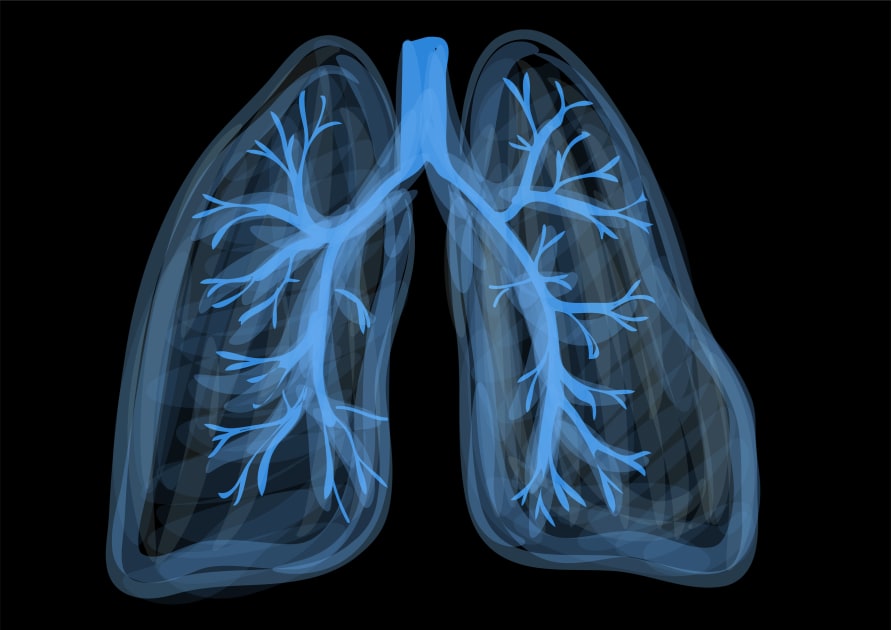Don’t miss out on the latest groundbreaking discoveries in the field of lung disease! In this article, you will gain an insight into the most recent research that sheds light on this often misunderstood condition. From innovative treatment methods to potential causes, the scientific community is working diligently to uncover new and effective ways to combat lung disease. Stay up to date with the latest findings and learn how they can potentially transform the lives of millions.
1. Types of Lung Disease
Lung disease refers to any condition that affects the functioning of the lungs. There are several types of lung diseases that can have a significant impact on your respiratory health. Understanding these different types can help you better comprehend the nature of your condition and explore appropriate treatment options.

1.1 Chronic Obstructive Pulmonary Disease (COPD)
COPD is a progressive lung disease that includes chronic bronchitis and emphysema. It is characterized by the obstruction of airflow to the lungs, making it difficult to breathe. COPD is often caused by long-term exposure to irritants like cigarette smoke and environmental pollutants. While there is no cure for COPD, various treatments and lifestyle modifications can help manage symptoms and slow down its progression.
1.2 Asthma
Asthma is a chronic respiratory condition that involves inflammation and narrowing of the airways, leading to breathing difficulties. It is commonly triggered by allergens, exercise, stress, and respiratory infections. Asthma can vary in severity, and symptoms can range from mild wheezing to severe shortness of breath. Proper management of asthma involves identifying triggers, using inhalers, and following an asthma action plan prescribed by a healthcare professional.
1.3 Lung Cancer
Lung cancer is a malignant tumor that arises in the lungs, usually as a result of long-term tobacco smoking. It is one of the most common types of cancer and can spread to other parts of the body if not detected and treated early. Symptoms of lung cancer may include persistent cough, chest pain, sudden weight loss, and difficulty breathing. Treatment options for lung cancer include surgery, radiation therapy, chemotherapy, targeted therapy, and immunotherapy.
1.4 Pulmonary Fibrosis
Pulmonary fibrosis is a condition characterized by the scarring of lung tissue, leading to the thickening and stiffening of the lungs. This scarring can hinder the transfer of oxygen from the lungs to the bloodstream, causing shortness of breath and eventually respiratory failure. The exact cause of pulmonary fibrosis is often unknown, but it can be associated with certain medications, environmental exposures, autoimmune diseases, and genetic factors. Treatment options for pulmonary fibrosis aim to alleviate symptoms and slow down its progression.

1.5 Cystic Fibrosis
Cystic fibrosis is a genetic disorder that primarily affects the lungs, but also impacts other organs such as the pancreas and digestive system. It results in the production of thick, sticky mucus that obstructs the airways, leading to recurrent lung infections and respiratory difficulties. Individuals with cystic fibrosis require ongoing medical care, including inhaled medications, airway clearance techniques, and nutritional interventions. Early diagnosis and appropriate management significantly improve the quality of life for people with cystic fibrosis.
1.6 Pneumonia
Pneumonia is an infection of the lungs that can be caused by bacteria, viruses, or fungi. It leads to inflammation of the air sacs in the lungs, causing symptoms such as cough, fever, chest pain, and difficulty breathing. Pneumonia can range from mild to severe, and complications can arise, particularly in older adults and individuals with weakened immune systems. Treatment mainly involves antibiotics, rest, and hydration, although hospitalization may be necessary in severe cases.

1.7 Tuberculosis (TB)
Tuberculosis is a bacterial infection caused by Mycobacterium tuberculosis that primarily affects the lungs. It spreads through the air when an infected individual coughs or sneezes, making it highly contagious. Symptoms of tuberculosis include a persistent cough, weight loss, night sweats, and weakness. Treatment typically involves a combination of antibiotics taken over several months to eradicate the infection. Proper adherence to the treatment regimen is crucial to prevent drug resistance.
1.8 Pulmonary Hypertension
Pulmonary hypertension is a type of high blood pressure that affects the arteries in the lungs and the right side of the heart. It occurs when the blood vessels in the lungs become narrow and stiff, making it harder for blood to flow through them. This can lead to symptoms such as shortness of breath, fatigue, chest pain, and swelling in the legs and ankles. Treatment options for pulmonary hypertension depend on the underlying cause and may include medication, oxygen therapy, and lifestyle modifications.

1.9 Occupational Lung Diseases
Occupational lung diseases are lung disorders that result from exposure to hazardous substances in the workplace. Examples include occupational asthma, silicosis, and asbestosis. These conditions can develop over time due to prolonged exposure to dust, chemicals, fumes, or other harmful particles in specific industries. Prevention through adequate safety measures and the use of protective equipment is crucial for minimizing the risk of occupational lung diseases.
1.10 Respiratory Infections
Respiratory infections encompass a range of conditions such as bronchitis, influenza, and pneumonia. These infections primarily affect the respiratory system, causing inflammation and congestion in the airways. The common cold is also a respiratory infection, albeit less severe. Prevention through regular handwashing, vaccination, and avoiding close contact with infected individuals can help reduce the risk of respiratory infections. Treatment typically involves rest, hydration, and medication to alleviate symptoms.
By understanding the different types of lung diseases, you can become more aware of the specific challenges and potential interventions related to each condition. This knowledge can empower you to engage in proactive measures for prevention and optimal management of your lung health.
